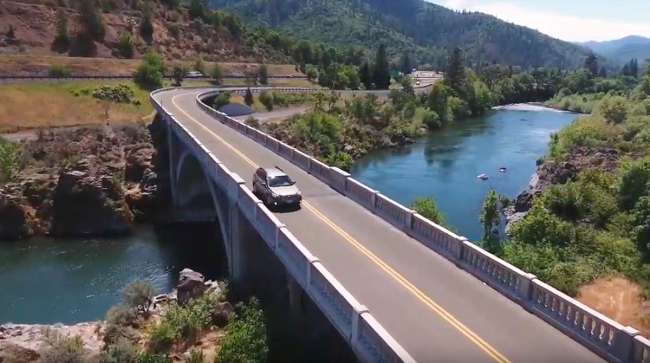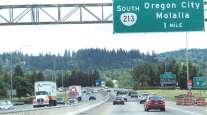Staff Reporter
Oregon DOT Launches Education Campaign on Transportation Funding

[Stay on top of transportation news: Get TTNews in your inbox.]
The Oregon Department of Transportation on Aug. 6 launched Keep Oregon Connected to educate the public on transportation funding needs.
Besides informing constituents about funding issues, the campaign is meant to educate people about relatively new ways to finance road and bridge projects. One such initiative is OReGO, a voluntary road-usage program that assesses a per-mile charge. Participating drivers plug a small cartridge or “dongle” into their vehicle’s data port to keep track of miles driven and fuel consumption.
“Oregon has about 74,000 miles of roads and more than 8,000 bridges connecting residents and visitors to their favorite places,” ODOT Assistant Director Travis Brouwer said in a press release. “However, most people who drive those highways and crossings don’t pause to think about their future maintenance and preservation.”
ODOT created Keep Oregon Connected because agency officials recognized that many citizens lack awareness about transportation funding issues.
Between January and March 2018, ODOT conducted online research that included a panel of 60 Oregonians from different regions. The purpose was to test education campaign messages, concepts and tools that addressed why transportation funding matters in daily life, why decreasing fuel tax revenue is becoming a problem and how a delay in finding a funding solution could impact mobility across the state.
ODOT found that, at the beginning of the study, 24% of participants didn’t know whether Oregon had adequate transportation funding. That figure had dropped to 8% when the research period was over.
ODOT plans to bring Keep Oregon Connected to various events through 2020 to raise awareness about transportation funding. The first event will be the Oregon State Fair in Salem in late August.
According to the press release, the campaign will highlight how OReGO can offer a more viable funding solution than the fuel tax. Oregon’s excise tax rate for diesel and gasoline is 34 cents per gallon, according to the American Petroleum Institute. As vehicles become more fuel-efficient, the stream of revenue from the fuel tax is thinning.

Brown
Gov. Kate Brown on June 20 signed legislation to expand OReGO. The bill allows an unlimited number of qualified vehicles to register for OReGO (the program previously was capped at 5,000 participants.) To qualify, vehicles must get at least 20 miles per gallon. This rate is the “break-even point” at which fuel tax payment equals the road charge. Drivers of vehicles that get fewer than 20 mpg will continue to pay taxes at the pump.
The legislation also directs ODOT to consult with vehicle dealers to encourage participation in OReGO at the vehicle’s point of sale.
Oregon was an early pioneer of the road-usage charge system. The state’s Road User Fee Task Force started conducting per-mile charging pilot programs in 2007. OReGO has enrolled more than 1,600 vehicles since its formal launch in 2015.
Oregon has been joined by several other states, including Utah and California, which have conducted pilot programs with such charge systems.




